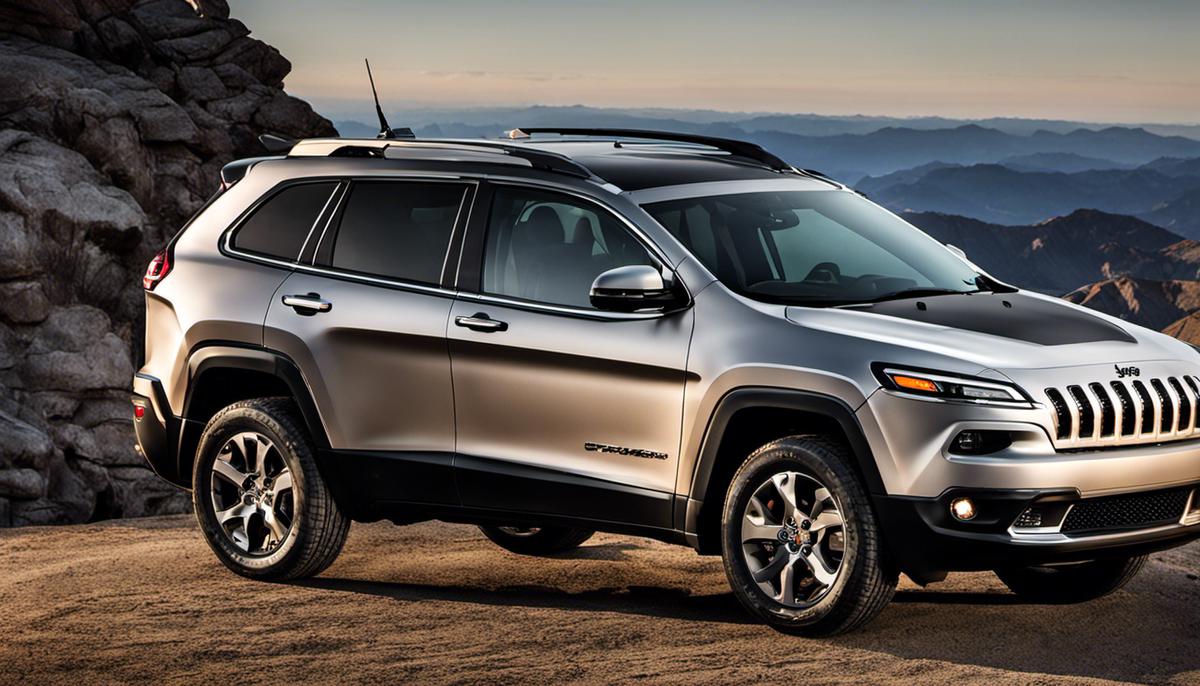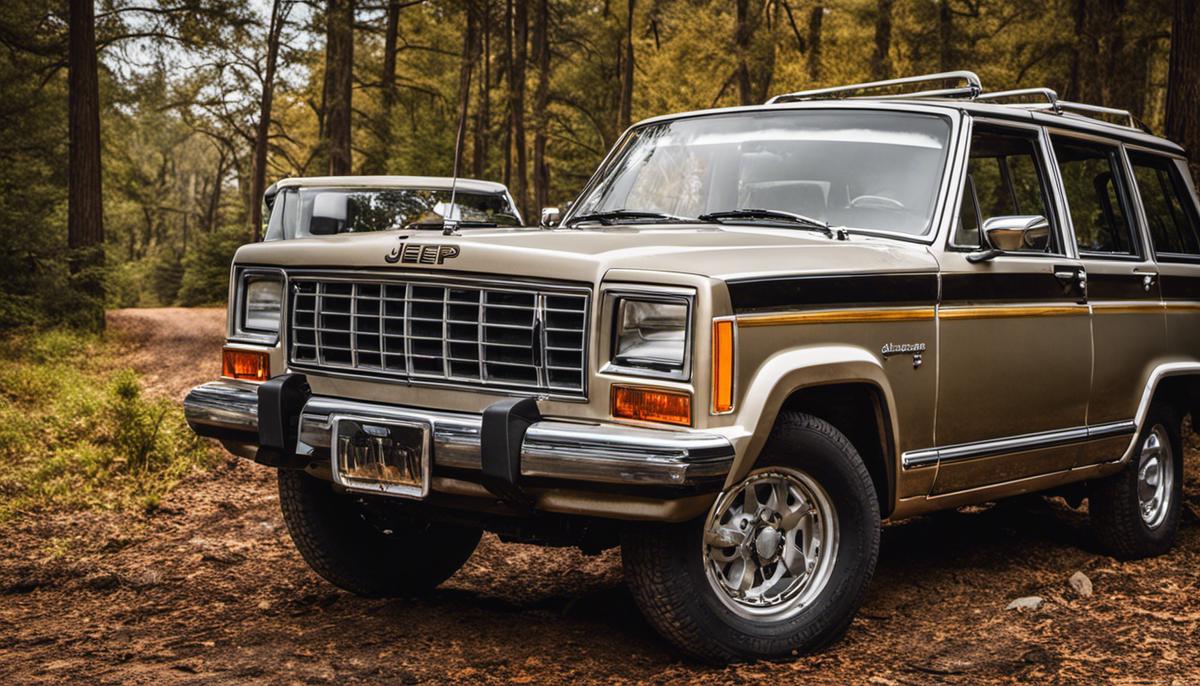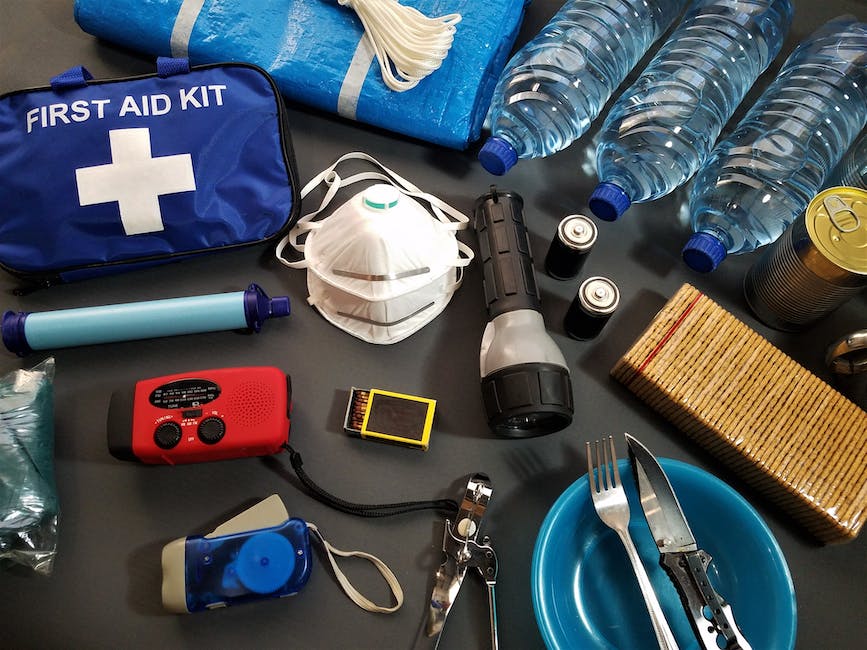Essential Jeep Cherokee Maintenance Tips: Keep Your Jeep in Top Shape

Last Updated on September 19, 2023 by Christ
Jeep Cherokee, a robust vehicle synonymous with off-road adventures, longevity, and reliability, needs regular maintenance to keep it operating at its best. This includes a deep understanding of the vehicle’s maintenance schedule, a commitment to routine checks, and a keen eye for recognizing common issues early. With the right information, you can ensure that your Jeep Cherokee is more than a vehicle, it’s a loyal companion, sharing every adventure while keeping safety and performance at the core. This guide will provide insight into maintaining your Jeep Cherokee, from learning about its maintenance schedule, handling routine checks, troubleshooting common issues, to acquiring some basic DIY maintenance skills.
Contents
Understanding Your Jeep Cherokee’s Maintenance Schedule
Understanding Your Jeep Cherokee’s Maintenance Schedule
The first step in understanding your Jeep Cherokee’s maintenance schedule is to familiarize yourself with the manufacturer’s recommended set of tasks. This information can typically be found in your vehicle’s owner’s manual. If you’ve misplaced your manual, an online search using your Jeep’s model and year can usually yield this vital information.
Routine Jeep Cherokee Maintenance Tasks
These routine tasks generally include oil changes, tire rotations, brake inspections, and fluid level checks. Regular oil changes, for instance, are incredibly important for extending the life of your engine. For most models, it’s recommended to change your oil every 3,000 to 5,000 miles.
Tire rotations also play a crucial role in preventative Jeep maintenance. By evenly distributing wear, you’ll extend the lifespan of your tires and ensure your ride is smooth and balanced. Most experts recommend a tire rotation for your Jeep Cherokee every 6,000 to 8,000 miles.
Maintenance tasks also extend to the brake system. A brake inspection should be done approximately every 12,000 miles to keep your Cherokee stopping effectively. This check includes examining the brake pads for wear, and ensuring the brake fluid is clean and at the correct level.
More In-Depth Cherokee Maintenance Tasks
Every 2-3 years, or around 30,000 to 45,000 miles, your Jeep Cherokee requires more in-depth maintenance. This maintenance generally includes replacing the spark plugs, the air filter, and possibly the transmission fluid.
Replacing the spark plugs can greatly improve your Cherokee’s performance and fuel efficiency. The air filter catch particles before they can enter your engine, and over time can become clogged, impeding performance. A fresh filter will allow your engine to breathe better and run more efficiently. As for the transmission fluid, clear fluid is vital to the health and function of your vehicle’s transmission.
Scheduled Jeep Cherokee Maintenance
In addition to these more common tasks, certain mileage milestones also warrant additional attention. For instance, at the 60,000-mile mark, belts such as the timing and serpentine belt should be checked and possibly replaced, along with the coolant.
Understanding your Jeep Cherokee’s maintenance schedule is the key to ensuring its longevity and performance. This schedule gives you the tools to prevent common vehicle problems before they become major issues. While some tasks, like oil changes, will need to be done more frequently, others can be spaced out over months or even years, giving you plenty of time to plan and budget for repairs.

Performing Routine Checks and Cleaning
Routine Check of Your Jeep Cherokee
To ensure that your Jeep Cherokee runs smoothly and stays in optimum condition, specific routine checks should be performed. The major checks include oil, coolant, brake, tire pressure, and battery monitoring.
Oil Checks
To check your oil level, first ensure your Jeep is on a flat surface and has been idle for at least 10 minutes to allow the oil to settle. Unscrew the oil dipstick, wipe it clean, insert it back and remove it again to check the oil level. If it is between the two indicator lines, the oil level is optimal. However, if it is near or below the minimum line, you will need to add more oil. Using a funnel, add oil gradually and check the level often to avoid overfilling.
Coolant Checks
To examine the coolant, first, check the overflow tank’s coolant level that is often visible without opening the cap. If the tank is below the minimum mark, you may need to add more coolant. However, never open the coolant cap when the engine is hot as it’s under pressure.
Brake Checks
To check the brake fluid, locate the brake fluid reservoir in the engine bay. The fluid should be between the “MIN” and “MAX” marks on the side of the reservoir. If not, top it up using a recommended brake fluid. The brake pads can also be inspected through the spokes of the car wheel, and the worn-out pads replaced as necessary.
Tire Pressure Monitoring
Routinely checking your Jeep Cherokee’s tire pressure is crucial for ensuring optimum performance. For an accurate pressure reading, check the tire pressure before driving the Jeep or when it has been cooling for 3 hours or more. The recommended tire pressure for a Jeep Cherokee is typically found in the vehicle’s manual or on the driver’s side door placard.
Battery Checks
Battery monitoring is also integral in maintaining your Jeep Cherokee’s optimal functioning. Look for any signs of battery damage or corrosion on the battery terminals. To maintain lifespan and performance, clean any corrosion with a battery cleaning brush and apply anti-corrosion spray.
Jeep Cherokee Cleaning Tips
Proper cleaning of your Jeep Cherokee not only keeps it looking shiny but also enhances its longevity.
Cleaning the Exterior
When cleaning the exterior, consider starting from the top and working your way down to prevent dirt from running onto already cleaned areas. Use a gentle car cleaning solution and soft sponge or cloth for the body. Clean the wheels last, using a suitable wheel cleaner and brush.
Cleaning the Interior
For the interior, vacuum the seats, carpeting, and mats. Use a mild cleaner and soft cloth to wipe down the dashboard, center console, and other surfaces. Use a window cleaner and microfiber cloth for windows.
Cleaning the Undercarriage
Cleaning your Jeep Cherokee’s undercarriage can be a bit trickier but crucial, especially if driving off-road or in salty conditions in winter. Use a pressurized water spray to wash away dirt and salt. Dry it thoroughly afterward to prevent rust.
By performing these routine checks and cleaning practices, you can ensure your Jeep Cherokee stays in great shape for the long run.

Recognizing Common Issues
Understand Common Electrical Problems
Jeep Cherokees often face a number of electrical problems. Some indicators of a potential issue include exhibiting difficulty starting the engine, flickering interior or exterior lights, power accessories such as the windows or seat warmth not working, and the audio system malfunctioning. If you notice any of these signs, you might be dealing with an electrical problem.
Recognizing Transmission Issues
Transmission problems are also common with Jeep Cherokees. Signs of these problems can be detected through various symptoms: difficulty shifting gears, delays before the car actually shifts after a gear change, the gear slips out, or the vehicle makes unusual noises during gear changes. Additional signals can be an acute smell of burning, which could signify overheated transmission fluid, or leaks underneath the vehicle. All these indicate potential transmission troubles.
Detecting Engine Problems
Engine issues are another frequent problem. Symptoms can range from stalling or rough idling, to poor fuel efficiency, a lit ‘Check Engine’ light, or unexplained noises coming from under the hood. Your vehicle might also start shaking at high speeds or lurch forward when accelerating. These signs could all point towards an engine-related issue.
Signs of Cooling System Trouble
The cooling system of a Jeep Cherokee can occasionally prove problematic. If you begin to notice the temperature gauge rising more often than usual or see coolant leaking under your car, your cooling system may need maintenance. Similarly, if your Jeep begins to send out white exhaust smoke, or you notice a decreased cabin heater performance in cold weather, you may have a cooling system problem.
Identifying Brake Problems
Brake system problems can arise in Jeep Cherokees. Symptoms might include squeaking or grinding noises when you bridle, a brake pedal that feels spongy or hard, or vehicle wobbling or pulling to one side when braking. If the brake warning light comes on, this is also a clear sign that brake servicing or repairs may be crucial.
Recognizing Suspension Issues
Another common area where issues arise in Jeep Cherokees is the suspension system. Signs that suggest a potential suspension problem include the vehicle pulling to one side while driving, feeling every bump or dip in the road, or a bouncing motion that continues several times after going over a bump. If you notice these symptoms, you might be facing a suspension problem.
All these signs are indicative of potential troubles with your Jeep Cherokee. If you observe any of these symptoms, it’s important to get your vehicle checked by a professional mechanic. Regular maintenance and attending to problems as soon as they arise can drastically increase the life of your vehicle and ensure a safer ride.

Basic DIY Maintenance skills
Changing a Flat Tire on Your Jeep Cherokee
It’s essential for all drivers to know how to change a flat tire. First, locate the spare tire and the car jack in your vehicle. Ensure your Jeep Cherokee is on flat ground and put on the parking brake to keep it from moving. Using the lug wrench, loosen the lug nuts on the flat tire (do not remove them yet). Position the jack under the vehicle’s frame or designated jacking points and begin to raise the vehicle until the tire is off the ground. Then, fully remove the lug nuts and pull off the flat tire. Place the spare tire on the hub, replace and tighten the lug nuts as much as you can by hand. Lower the vehicle halfway, then tighten the lug nuts completely with the lug wrench. Lower the vehicle completely, but remember to check the tire pressure on your spare tire as soon as possible.
Replacing Wiper Blades on Your Jeep Cherokee
Wiper blade replacement is another simple task you can perform on your Jeep Cherokee. To start, you’ll need to lift the wiper arm away from the windshield. Press the small tab under the wiper where it meets the wiper arm. When the tab is pressed, slide the wiper blade off the arm by pulling it down. To attach the new wiper blade, pull it tight onto the arm. You will hear a clicking sound when the new blade locks into place. Then, gently lower the arm back onto the windshield and repeat the process on the other wiper arm.
Changing Oil and Filters on Your Jeep Cherokee
Regularly changing your vehicle’s oil and filters are crucial in maintaining your Jeep Cherokee. Begin by putting on safe clothing and lay a tarp or sheet underneath your vehicle. Using a car jack, raise your jeep to access the undercarriage. Put on some safety gloves and proceed to locate the vehicle’s oil plug. Remove the plug using a wrench, and make sure you have a container ready to collect the old oil. Once it’s all drained, replace the plug and locate the oil filter. Unscrew this with an oil filter wrench. Before screwing on the new filter, apply a little of the new oil on the gasket ring. This helps to keep it from sticking to the vehicle. Once the new filter is on, you can now fill the engine with new oil using a funnel.
Replacing the Battery on Your Jeep Cherokee
Replacing the battery on your Jeep Cherokee is another task you can perform yourself. Locate the battery in your vehicle — it’s typically in the engine bay. Begin by removing the negative (black) battery cable with a wrench. Once it’s disconnected, do the same with the positive (red) cable. There may be a battery clamp that needs to be removed also. Once it’s all detached, you can lift the battery out of the vehicle. When installing the new battery, begin with connecting the positive cable and then the negative. Replace any clamps if applicable and check to make sure the new battery is secure. Ensure you know where to safely dispose of your old battery in your local area.

Emergency Preparedness and Troubleshooting
Jeep Cherokee Emergency Preparedness
In a Jeep Cherokee or any other vehicle, the first step to being prepared for roadside emergencies is to equip your vehicle with an emergency preparedness kit. This should include a flashlight, jumper cables, a first aid kit, flares or triangle reflectors, a tire pressure gauge, a blanket, and water and non-perishable food items. Also including items such as a spare tire (in good condition), jack, and lug wrench, can be helpful in case of a tire blowout.
Discovering a Breakdown
If your Jeep Cherokee starts to slow down or stop while you are driving, it could be a sign of a breakdown. Safely pull over to the side of the road if possible. Do not attempt to stop in a traffic lane. Once pulled over, if it is safe to do so, get out of your vehicle and place the flares or triangle reflectors from your emergency kit to warn other drivers.
Troubleshooting Common Issues
One common issue with Jeep Cherokees that can lead to a breakdown is overheating. If your temperature gauge reads high or the warning light comes on, stop your vehicle as soon as it’s safe. Running the engine while it’s overheated can cause serious damage. You can check the coolant level and add more if needed. If the coolant level is fine, the issue might be a malfunctioning thermostat or a leak in the coolant system.
Another common issue is a flat tire. If your vehicle starts drifting or pulling in one direction or you hear a loud thud, you may have a flat tire. Slow down slowly and pull over to a safe location, preferably a flat, stable surface. Replace the flat tire with your spare tire using the jack and lug wrench in your emergency kit.
Engine misfire is also common in Jeep Cherokees. If your vehicle is shaking or jerking, or if your check engine light flashes, it might be an engine misfire. This could be due to bad spark plugs, a malfunctioning fuel injector, or a problem with the cylinder. This issue requires professional help, so call a tow truck to take your vehicle to a mechanic.
In case you’re experiencing difficulty starting your Jeep Cherokee, inspect the battery for any corrosion. Unbolt the battery terminals and clean them with a wire brush before reconnecting. If the vehicle still doesn’t start, there could be a problem with your starter or ignition switch.
Calling for Help
If the problem with your Jeep Cherokee is beyond your troubleshooting ability, call for professional help. This could mean a tow truck or roadside assistance service like the AAA. Keep important numbers, such as your car insurance provider and a trusted local mechanic, saved in your phone for easy access during emergencies. If you’re in a remote location with no cell service, a handheld CB radio or satellite phone can be useful.
Remember, safety is always the top priority. If your vehicle breaks down, your main goal should be to protect yourself and your passengers, and not to repair the vehicle.

Having a Jeep Cherokee means experiencing the thrill of freedom, the assurance of strength, and the joy of an adventurous journey. However, all these are largely dependent on how well its maintenance is prioritized. Understanding your vehicle’s maintenance schedule, performing routine checks and cleaning, learning to pinpoint common issues, and having basic DIY skills are all part of owning a Jeep Cherokee. Moreover, knowing what to do during emergencies and mastering the art of troubleshooting add to your confidence on the road. Therefore, mastering these areas not only keeps your vehicle in optimal running condition but also enhances your driving experience and prepares you better for the unknown path ahead.
Leave a Reply